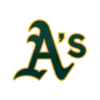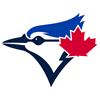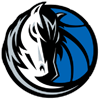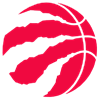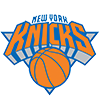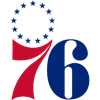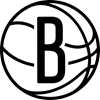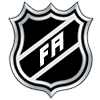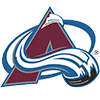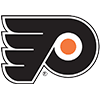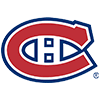Last year I devised a formula for ranking farm systems based on my top 400 prospect rankings and subsequently used that formula to rank all 30 systems right after the trade deadline. While I thought last year's rankings were a success, I have decided to tweak the formula slightly for the second annual installment. Last year I weighed all prospects in the top 25 equally, but for this year and future years, I want to distinguish a couple more tiers within the top 25, as there is obviously a pretty big difference between the No. 1 prospect in the game and the No. 25 prospect in the game.
Here is the formula: Prospects in the top three of the top 400 prospect rankings (updated Aug. 1) multiplied by seven + prospects in the top 10 multiplied by six + prospects in the top 25 multiplied by five + prospects in the top 50 multiplied by four + prospects in the top 100 multiplied by three + prospects in the top 200 multiplied by two + prospects in the top 400 multiplied by one = each team's farm system score.
As you can figure out, this formula rewards teams with high-ranking prospects while also rewarding teams with a lot of prospects represented in the top 400. The flaws are obvious. It doesn't factor in non top-400 prospects, and also doesn't have a perfectly linear weight to the rankings, so the No. 26 prospect carries the exact same significance as the No. 50 prospect, etc... That said, I stand by these rankings on the whole, as 400 is a large enough sample where most of that noise gets canceled out.
Each team's farm system score is in parenthesis, so you can see how big or small the gap is between the next closest system. Tie-breakers were awarded to the team with the most prospects in the highest qualified tier, or the highest prospect in the highest qualified tier if the quantity in that tier is equal.
1. Padres (134)
Last year: 3rd
I thought the Rays had a legitimate shot to finish first, and while the Padres don't have as many top-400 prospects as the Rays, the big separator was that San Diego had a whopping 13 prospects ranked in the top 100, which easily led all teams. They routinely pick in the top 10, they set an international spending record a couple years ago, and they get impact prospects in trades (Fernando Tatis Jr., Chris Paddack, Francisco Mejia, Logan Allen, Josh Naylor, Anderson Espinoza), so it makes sense that the Padres ranked as a top three system for a second year in a row. The future in San Diego is awfully bright, and I expect them to start to resemble a juggernaut in 2020 or 2021. The system is even more impressive when considering Reggie Lawson, Osvaldo Hernandez, Andres Munoz, Michell Miliano and Joey Cantillo would all probably squeeze in if I expanded the top 400 by about 25 spots.
2. Rays (117)
Last year: 6th
The Rays have quietly had a top-six system for a year now, but the emergence of Wander Franco as an elite prospect has pushed them into the top two with little debate. Tampa Bay leads baseball with 26 prospects ranked in the top 400, with 12 ranking inside the top 150. Only five of the 26 were acquired via trade, so this has largely been a product of great drafting/developing and impact international signings. They probably would have finished first if they'd received a prospect-heavy package for Chris Archer, but obviously Austin Meadows and Tyler Glasnow no longer have prospect eligibility and we still don't know who the third piece in that deal is. Given Franco's pedigree (No. 1 overall J-2 signing last year), it shouldn't be a huge shock that he has exploded like this, although I was clearly too low on him initially. The big surprise this year has been Nathaniel Lowe, the less-heralded Lowe brother (Josh Lowe is related, Brandon Lowe is not). Nathaniel was a 13th-round pick in 2016 and is on the short list of players with a claim for minor-league hitter of the year. Buying into older first base prospects can be dangerous (he just turned 23 at Double-A), but I don't see any flaws in his offensive game.
3. Blue Jays (85)
Last year: 14th
I wouldn't have guessed that the Jays would rank quite this high, but if a team has the No. 1 and No. 5 overall prospects in the game, their system probably should rank in the top five. The Jays have crushed the draft in recent years, despite not having particularly high picks, most notably getting Bo Bichette and Cavan Biggio in 2016, Kevin Smith and Nate Pearson in 2017, and Jordan Groshans this year. They're also big players on the international market, landing Vladimir Guerrero Jr. and Mc Gregory Contreras in 2015, Miguel Hiraldo and Eric Pardinho in 2017, and Orelvis Martinez this year. Even with this level of competency in the front office, they face an uphill battle in the American League East, as the Red Sox and Yankees are juggernauts and the Rays are building a monster.
4. White Sox (85)
Last year: 2nd
The White Sox once again finish in the top four in these rankings due to a top-heavy system that lacks impressive depth. Eloy Jimenez is clearly the No. 2 prospect in the game. Michael Kopech (despite a slightly disappointing season), the oft-injured Luis Robert and this year's top pick Nick Madrigal are all top-50 prospects. They only have five players ranked in the top 100 (Dylan Cease being the other). However, this system would have easily ranked third if it were not for significant injuries to Alec Hansen, Dane Dunning, Jake Burger and Micker Adolfo.
5. Braves (80)
Last year: 1st
Last year's top system remains in the top five, even after the graduations of Ronald Acuna and Max Fried. They still have the best collection of pitching prospects in baseball, and added another quality starter in Kevin Gausman at the deadline while hardly hurting their farm system. This is a dream team to root for, because by the middle of next year, they will have 10 or 11 quality, exciting pitchers who deserve looks in the big-league rotation. That depth protects them from untimely injuries and gives them the freedom to acquire anyone they want on the trade market. The NL East should be theirs for the next half-decade.
6. Astros (79)
Last year: 5th
This system still has some big-time juice up top, but by this time next year, I expect it to finally drop out of the top 10 following the presumed graduations of their four players (Forrest Whitley, Kyle Tucker, Yordan Alvarez, Josh James) inside the top 100. Of course, few teams are better at finding and developing young talent than Houston, so I wouldn't put anything past them at this point. Their wealth of close-to-the-majors pitching talent (Whitley, James, Corbin Martin, Cionel Perez, Trent Thornton) is unfair, especially since they already have the league's best rotation. From a fantasy perspective it's a little frustrating, as guys like James and Thornton would have probably already reached the majors if they were in other organizations.
7. Twins (74)
Last year: 11th
2016: Alex Kirilloff, 2017: Royce Lewis, 2018: Trevor Larnach -- that's about as good of a three-year run as a team can have when it comes to drafting position players in the first round, and that's why the Twins rank so high. The system falls off quite a bit after that top three. Brusdar Graterol, who is clearly their best pitching prospect, has already reached High-A as a 19-year-old, but he isn't particularly close to the majors. Nick Gordon rehabbed his stock in a return trip to Double-A but has fallen on his face against Triple-A pitching. Akil Baddoo, Yunior Severino, Wander Javier and Misael Urbina (their top J-2 signing this year) make for nice position player lottery tickets, but Twins fans should only expect one or two of them to pan out. They did well to add legitimate prospects at this year's deadline, but while Jhoan Duran and Jorge Alcala have electric stuff, they also come with extreme bullpen risk.
8. Reds (71)
Last year: 10th
Every good Reds prospect was drafted by the Reds. They haven't done very well when trading for prospects, with the exception of the Todd Frazier deal that netted Jose Peraza and Scott Schebler, and they probably have the worst dollar-to-talent ratio of any team that has spent big on the international market in recent seasons. Vladimir Gutierrez, Jose Garcia and Alfredo Rodriguez were all given seven-figure bonuses out of Cuba and none have come close to living up to the hype. That said, what the Reds do well (drafting), they do really well. It helps to pick near the top of the draft, but getting Tyler Stephenson and Tony Santillan in 2015, Nick Senzel and Taylor Trammell in 2016, Hunter Greene and Jeter Downs in 2017, and Jonathan India and Mike Siani this year is a ridiculous four-year run of success.
9. Angels (70)
Last year: 27th
The Angels climbed all the way up from No. 27 on last year's rankings to No. 9 this year, and it is as much a product of masterful player development as it is impressive talent acquisition. Matt Thaiss, Luis Rengifo and Taylor Ward were known commodities coming into the year, but they've all put forth monster career years, emerging as legitimate hitting prospects at Triple-A. Their 2017 draft and J-2 classes produced Jo Adell, a no-doubt top-10 prospect in baseball, D'Shawn Knowles, one of the hottest names in the lower levels of the minors, and Griffin Canning, a high-probability mid-rotation starter. Their 2018 draft class looks to be similarly fruitful, as Jordyn Adams and particularly Jeremiah Jackson have really impressed thus far.
10. Nationals (60)
Last year: 16th
This ranking was a bit of a shocker for me, as the Nationals only have three prospects inside the top 150 and just eight in the top 400. That said, when those top three prospects (Victor Robles, Carter Kieboom, Luis Garcia) are elite, up-the-middle position players, it makes some sense. For instance, the Nationals could have used prospect gold to acquire literally any player who could have conceivably been traded at this year's trade deadline, and a lot of the teams ranked behind them can't say that. One has to assume the Nationals wish they could have a mulligan on the Jesus Luzardo trade, however, as they not only gave up the best player (Luzardo) but they gave up the best of the big-league relievers involved (Blake Treinen).
11. Yankees (51)
Last year: 8th
Following the graduations of Gleyber Torres and Miguel Andujar, the Yankees' system is more about depth in the lower levels than high-probability pieces in the upper levels. They still have a seemingly never-ending stream of high-upside pitching prospects at every level of the minors. They also have five outfield prospects (Estevan Florial, Antonio Cabello, Everson Pereira, Anthony Garcia, Kevin Alcantara) that they acquired on the international market that have immense ceilings and a lot of risk. It should come as no surprise that when Brian Cashman was swinging deals at the deadline, he refused to part with his pitching or his young, high-upside position player prospects. This organization simply does everything right when it comes to acquiring and developing prospects. They draft well, trade well and are extremely active internationally, so they should remain in the top half of farm systems for the foreseeable future.
12. Dodgers (50)
Last year: 9th
The Dodgers would have ranked in the top 10 prior to their deadline deals, but parting with a few pieces was well worth it, given the makeup of their big-league roster. Miguel Vargas is the big pop-up prospect on the position player side, while Tony Gonsolin and Edwin Uceta have popped up on the pitching side. Vargas hadn't played competitive baseball in the two years preceding this season, defecting from Cuba when he was 16 and signing last September. I'm pretty far out on a limb with him, but I think there's big-time hit/power projection, and he gets good reviews for his makeup. It's not necessarily a great honor when we're talking about prospects for dynasty leagues, but no system can match the Dodgers' top three catching prospects (Keibert Ruiz, Will Smith, Diego Cartaya).
13. Indians (49)
Last year: 15th
In my mind, the Indians' system is better than this ranking indicates, but the fact is they are a little light on high-probability, close-to-the-majors talent, with only Nolan Jones (at Low-A) and George Valera (injured and in Rookie ball) cracking the top 100. That said, this is a system on the rise, as they are absolutely loaded with intriguing position players in the lower levels, and Luis Oviedo could be a top-10 pitching prospect sometime next year. I wouldn't be surprised at all if they rank inside the top five a year from now.
14. Athletics (48)
Last year: 17th
Perhaps no system has suffered more unforeseen setbacks this year than Oakland's, and we're talking about a system with Jesus Luzardo, who has been the best pitcher in the minors this season. First, A.J. Puk needed Tommy John surgery, then every notable hitter on their Triple-A team (other than Dustin Fowler) came out of the gates hitting around the Mendoza Line. James Kaprielian and Daulton Jefferies, two high-upside pitchers recovering from TJ, have had setbacks in their recovery, which obviously isn't good, particularly considering neither pitcher has a lot of professional innings under their belt. A lot of people may look at Austin Beck's line at Low-A and think he's been a disappointment, but I'm really encouraged by his approach and the refinement of his hit tool. There's monster raw power in that bat, and he's a plus runner on the bases, but there were always questions about what kind of hitter he would be. I think he's answered those questions this season, and makes for an excellent trade target in dynasty leagues.
15. Brewers (45)
Last year: 4th
The Brewers ranked fourth last year, so this is quite a fall. Fortunately for them, that dip can almost exclusively be attributed to trades that have helped the big-league club. They cashed some chips in for Christian Yelich, who is good, and they cashed some lesser chips in for Mike Moustakas and Jonathan Schoop. However, with Freddy Peralta likely graduating from their list after his start Friday, the Brewers will fall even farther. That said, they have a lot of toolsy teenagers in Rookie ball who could ascend over the next calendar year, so I still expect them to be in the top 20 at this time next year.
16. Rockies (42)
Last year: 12th
This is an awfully high ranking for a team with just eight players in the top 400. That's because their top two prospects (Brendan Rodgers and Garrett Hampson) are comfortably inside the top 25. Grant Lavigne, a first baseman from the Northeast who was the No. 42 overall pick in this year's draft, and Eddy Diaz, a middle infielder with almost twice as many walks as strikeouts and 54 steals in the Dominican Summer League, are two of the hottest names in dynasty leagues right now, so make sure to add them if they are available in your league.
17. Phillies (42)
Last year: 7th
Unfortunately, Scott Kingery (who's not prospect eligible, but still), Jhailyn Ortiz and Francisco Morales have all been worse this year than I was expecting, and the Phillies probably needed one of Ortiz or Morales to impress in order to crack the top 15. It also hasn't helped that Sixto Sanchez is on the shelf with elbow inflammation, but an arm injury always seemed inevitable with him, as he checks pretty much every box one could think of for Tommy John indicators. Fortunately, Adonis Medina has been as advertised after a slow start, and a swing change has turned Adam Haseley into a stud at Double-A. Luis Garcia and Jake Holmes are also ascending players, but they are a long way away.
18. Mets (41)
Last year: 19th
This has long been a pretty boring system for me to cover, but not anymore. Ronny Mauricio, Jarred Kelenic, Mark Vientos, Luis Santana, Shervyen Newton and Adrian Hernandez ooze tools and upside in the lower levels, and while at least half of those guys probably won't pan out, it's possible that one ends up being a top-10 overall prospect in a year or two. I ranked Andres Gimenez 118 in the preseason, seeing him as a player likely to make it as a low-end regular who would chip in 15-to-20 steals with a .260-.270 average, very little power and a 2020 ETA. Now he is a 19-year-old at Double-A who I think could hit .280 with 25-plus steals and around 10 homers, with a chance to debut next year. Peter Alonso is doing at Triple-A what I expected him to do at Double-A -- striking out a ton and not hitting righties. He has been a really tough player for me to peg.
19. Pirates (37)
Last year: 21st
This was probably the most surprising ranking for me, as I would have guessed the Pirates would be a borderline top-10 system. Ke'Bryan Hayes is finally getting to that raw power, as he showed in the Futures Game, without compromising his hit tool. If he keeps this up, he'll have no trouble finishing the year as a top-50 prospect, and perhaps he should already be there. I'm lower on Mitch Keller (I don't like how dependent he is on his fastball) than most, and I'm lower on Oneil Cruz than some (I just don't see him ever hitting better than .250 or .260 against upper-level pitching). Lolo Sanchez has been a big disappointment this year at Low-A, and while he's off the top 400, he's still worth keeping an eye on in case he starts to hit. Kevin Kramer is a player I think I've been way too low on (I moved him up roughly 200 spots on this last update). He could be their second baseman of the future.
20. Cardinals (34)
Last year: 13th
First of all, I have no idea what the Cardinals were doing with the Tommy Pham trade. I get that the trade market for outfielders his age is soft and he was at odds with the front office, but he was a six-win player last year. The career WAR of Justin Williams and Genesis Cabrera, who are fine prospects that I don't take pleasure in panning, may not add up to six wins. I'm skeptical about Nolan Gorman maintaining his approach at High-A and Double-A, and I'm skeptical of Tyler O'Neill maintaining his approach against big-league pitching, but they've proven me wrong so far this season. Elehuris Montero certainly looks like a stud on paper, but there are a couple things I don't like about his profile. He's a righty-hitting/righty-fielding corner guy, so the bar for him to clear at every level will be very high. He also has a really aggressive swing with a head whack that just looks ugly. Maybe he'll be a Yoenis Cespedes type whose raw strength and hand-eye coordination overcomes the other faults, but I'm not betting on that until he does it in the upper levels.
21. Orioles (33)
Last year: 23rd
After all those trades the Orioles still couldn't crack the top 20, but on the bright side, they would have probably been in the bottom five if they hadn't decided to sell off all those pieces. I think there are brighter days ahead in Baltimore, but there's no sugarcoating the fact they are a distant fifth in that division in terms of long-term outlook. That said, in DL Hall, Grayson Rodriguez, Dillon Tate, Luis Ortiz, Hunter Harvey and slew of back-end types, it's surprisingly not hard to envision them having a pretty decent rotation in three or four years.
22. Royals (31)
Last year: 28th
Rebuilds are hard -- that will be the general theme for most of the teams in the bottom 10. The Royals haven't had a top-10 pick in a while, so they shouldn't be expected to have a monster farm system just yet, but they've sold everything they have to sell and didn't get much back. I think Dayton Moore is going back to his Braves roots and attempting to build through pitching, which is a lot easier said than done. With the exception of Nicky Lopez, none of their top prospects will be graduating anytime soon and they'll be picking very high next year, so this system will only get better in the coming years.
23. Diamondbacks (31)
Last year: 26th
Arizona absolutely crushed this year's draft, and their top pick (Matt McLain) didn't even sign. Jake McCarthy, Alek Thomas and Blaze Alexander are all off to excellent starts to their pro careers. The Diamondbacks have also been pretty active internationally in each of the last two signing periods, inking several high-upside outfielders (Kristian Robinson, Alvin Guzman, etc…). If Daulton Varsho and Jon Duplantier had been healthy all season, this system may have ranked five spots higher. This front office is good and this system will rank higher next year.
24. Tigers (30)
Last year: 25th
Rebuilds are hard. Franklin Perez's arm woes and Jake Rogers getting exposed against Double-A pitching have hurt quite a bit. Fortunately, Daz Cameron has done about as well since the Justin Verlander trade as anyone could have hoped, so that deal hasn't been a complete disaster. The pieces are here for a quality starting rotation in three years, with Casey Mize leading the way, followed by Matt Manning, who is absolutely electric but can struggle to throw strikes, a (hopefully healthy) Franklin Perez, Alex Faedo, and Elvin Rodriguez, whose curveball is filthy but whose changeup needs a lot of work.
25. Rangers (28)
Last year: 18th
This front office suffered a significant brain drain in recent years, and it is starting to show on the farm. Leody Taveras has been one of the biggest disappointments in the minors this year. Statistical production definitely isn't everything, and he's been young for his levels, but here are his wRC+ figures at his last three stops: 59 with short-season Spokane in 2016, 96 with Low-A Hickory in 2017, 80 with High-A Down East this year. What that means is he has been a below league-average hitter at every stop above the AZL, which is obviously not a great indicator. Fortunately, Bubba Thompson has had a great year in his full-season debut and Hans Crouse (still plenty of bullpen risk) is putting up video game numbers again. Julio Pablo Martinez has fine surface stats in the Northwest League, but he's striking out too much for a 22-year-old in that league, and his approach is extremely pull-heavy, so his stock is down in my eyes.
26. Giants (18)
Last year: 29th
Thankfully the Giants were big winners in this year's July 2 signing period, netting the top prize (Marco Luciano) and a solid second piece in Jairo Pomares, otherwise they would be in the bottom three. It's very, very early, but Joey Bart has nine homers in 99 plate appearances in the Northwest League, so he moves up about 200 spots on the top 400, even though he is old for the level and I still have doubts about him hitting for a high average against age-appropriate pitching. His organization-mate Heliot Ramos is a great example of the dangers in buying in fully to a player's first 10 weeks in pro ball. I still like Ramos, but he's going to move a little slower than I'm sure his owners were hoping. Speaking of overreactions, I shouldn't have moved Alexander Canario down when he got off to a miserable start in the AZL. He's still pretty raw, but has a lot of the stuff you can't teach. I could see him having an Estevan Florial-esque trajectory as a prospect. Keep an eye on Shaun Anderson as a deep-league sleeper next year.
27. Marlins (17)
Last year: 30th
Rebuilds are hard, especially when an organization mostly botches the trades of their three premium outfielders under team control. Nick Neidert's stuff has really improved since being shipped to Miami in the Dee Gordon deal, and Isan Diaz and Jordan Yamamoto are having solid seasons, but all of the other pieces Miami acquired this past offseason have been huge disappointments. Their top prospect is a potential third outfielder (Brian Miller) with premium speed and no power. That's not good.
28. Mariners (9)
Last year: 22nd
I'm just as shocked as the rest of you that the Mariners aren't even lower on this list, but they at least have a couple exciting teenage position players (Julio Rodriguez and Noelvi Marte) that they acquired over the last two July 2 signing periods. Kyle Lewis' story is a sad one, and Evan White has been a bit of a disappointment. Josh Stowers has some upward momentum, but has not yet played at an age-appropriate level.
29. Red Sox (8)
Last year: 20th
While the top 400 is for dynasty leagues, and the Red Sox therefore have the second-worst fantasy farm system around, their system is actually worse in real life, as many of their top prospects (Josh Ockimey, Michael Chavis, Danny Diaz, Bobby Dalbec, Tristan Casas) are bat-first guys. Things would look a little better if one of Bryan Mata or Darwinzon Hernandez had improved their odds of sticking as a starter, or if Jay Groome hadn't needed Tommy John surgery.
30. Cubs (7)
Last year: 24th
Flags fly forever, so there's no shame in the Cubs being down here after winning a World Series and doing everything in their power to remain a title contender in the short term. That said, I'm guessing they wish they'd used Eloy Jimenez in a different manner, either keeping him or trading him for a better player than Jose Quintana -- not that I was expecting Quintana to be this mediocre. The Cubs have been active in the last two international signing periods and seem to have done well in this year's draft, so this should be as bad as it gets on their farm – not that it could really get any worse.










